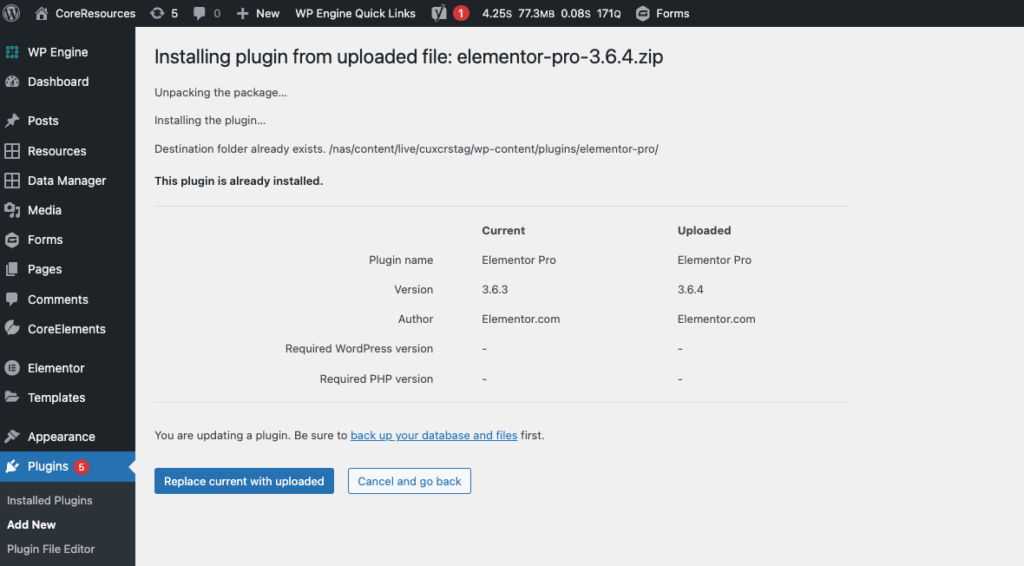A common procedure in managing a WordPress site is having to update your theme and plugins. If you are using a plugin installed via WordPress.org’s collection of free plugins, WordPress can automatically alert you to an available update for your plugins and easily update them for you with the click of a button. In the case of certain premium plugins or custom plugin that are not sourced via WordPress.org, you may need to manually update your plugins as new updates become available.
As of WordPress version 5.5, you can easily update your plugins in your website’s backend by uploading zip files of the new versions. Follow the steps below to manually update your plugin. Repeat the steps for each plugin that you need to update.
Note: It is highly recommended to always backup your site before updating any plugin. If you have a staging environment, it is recommended to test there first before making any changes to your live website.
- Backup your website.
- Download the zip file of the new version of your plugin from the source. For premium plugins, that should be from the website you purchased the theme at originally.
- Login to the backend of your WordPress website.
- Navigate to Plugins > Add New.
- Click the “Upload Plugin” button at the top of the page.

- You will be prompted to select the zip file from your computer. Select the file from your computer and then click “Install Now”.
- Before installing the update, WordPress will show you a comparison of the plugin you are updating. You can check the currently installed version against the new version and double-check you want to confirm going through with the update. If everything looks good, press the “Replace current with uploaded” button to continue with the update.

- Once the update is complete, WordPress will confirm the plugin has been updated successfully. If you have any type of server cache or plugin caching on your website, it is a good practice to clear those caches once the update is completed to help ensure your users are seeing the latest updates when visiting the website.
- After updating the plugin and clearing caches if any, test the backend and frontend of your site. When testing the frontend, use a browser/window where you are not logged in to see the site the same as your users.
- If everything is looking right and behaving normally, your plugin update was successful and you are finished.
- If something does not look or behave right after the update, first try testing your website again in a different browser or a private/incognito window to ensure it is not a local caching issue from your browser. If a different browser or private window looks right, the update was successful.
- If you are still having issues after testing without local browser cache, it may be a problem from the plugin update. You can try reverting to the backup you made before the update and work with your IT team to help resolve the issue.
